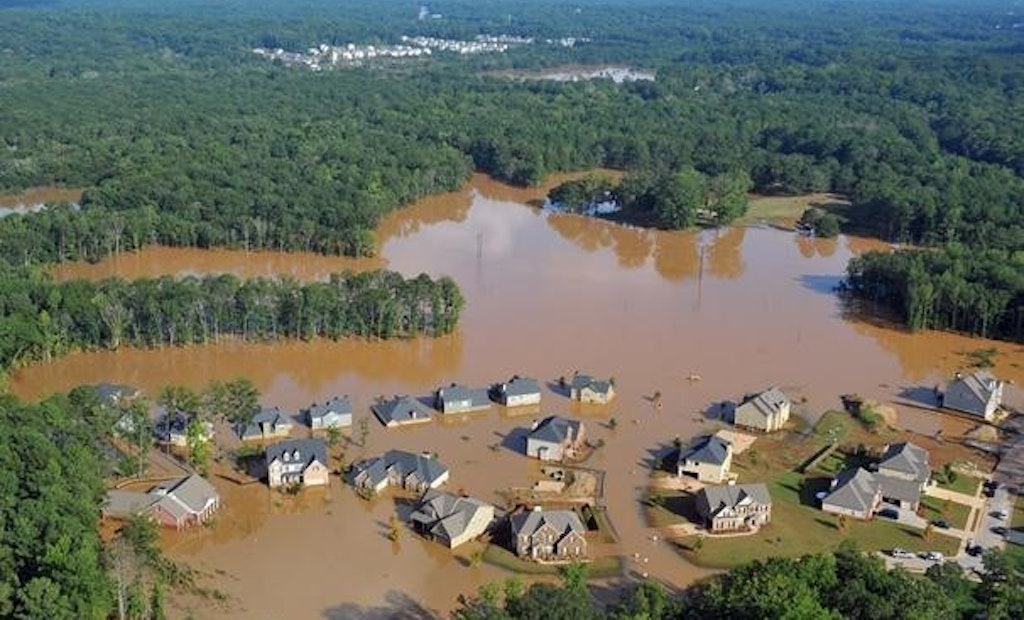Interested in Stormwater?
Get Stormwater articles, news and videos right in your inbox! Sign up now.
Stormwater + Get AlertsWhen rain began falling in northern Georgia Sept. 15, 2009, little did Atlantans know they would witness epic flooding throughout the city. Neighborhoods such as Peachtree Hills were submerged; Georgia’s busiest expressway was underwater, as were other roads and bridges; untreated sewage mingled with rising flood waters; cars and people were swept away.
Moisture from the Gulf of Mexico fueled the flood of 2009. A decade later, Arizona State University researchers are asking whether a combination of urban development and climate change fueled by greenhouse gases could bring about comparable scenarios in other U.S. cities. Based on a new study, the answer is yes.
“When we account for these twin forcing agents of environmental change, the effect of the built environment and the effect of greenhouse gases, we note a strong tendency toward increased extreme precipitation over future U.S. metropolitan regions,” says Matei Georgescu, lead author of the study.
Previous studies have shown that urban development modifies precipitation, thanks to what’s known as the urban heat-island effect: The difference between the temperature in a city and the surrounding rural area. As a city grows, it gets warmer. The added warmth adds energy to the air, forcing the air to rise faster, condense, form precipitation and rain over the city or downwind of the city. The amount of precipitation a city receives increases or decreases in response to the urban heat-island effect.
However, when greenhouse gases and urban development are both taken into account, climate modeling of the continental U.S. shows the effect of urban development and greenhouse gas emissions on extreme precipitation.
The U.S. National Science Foundation-funded study was published in the journal Environmental Research Letters. “This research reflects the emerging field of urban climate science, which is of vital relevance now and in the future,” says Bruce Hamilton, a program director in NSF's Directorate for Engineering.






